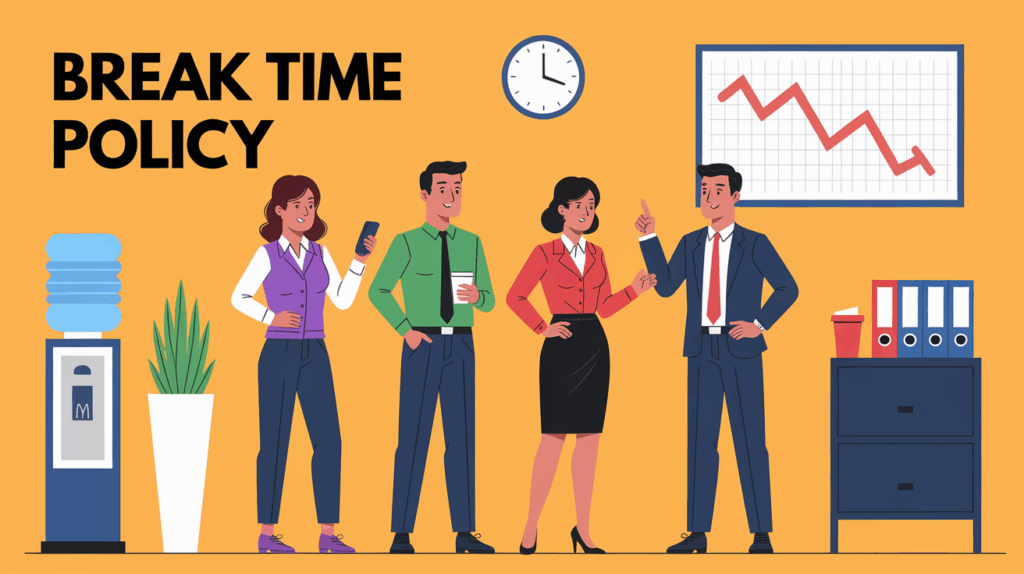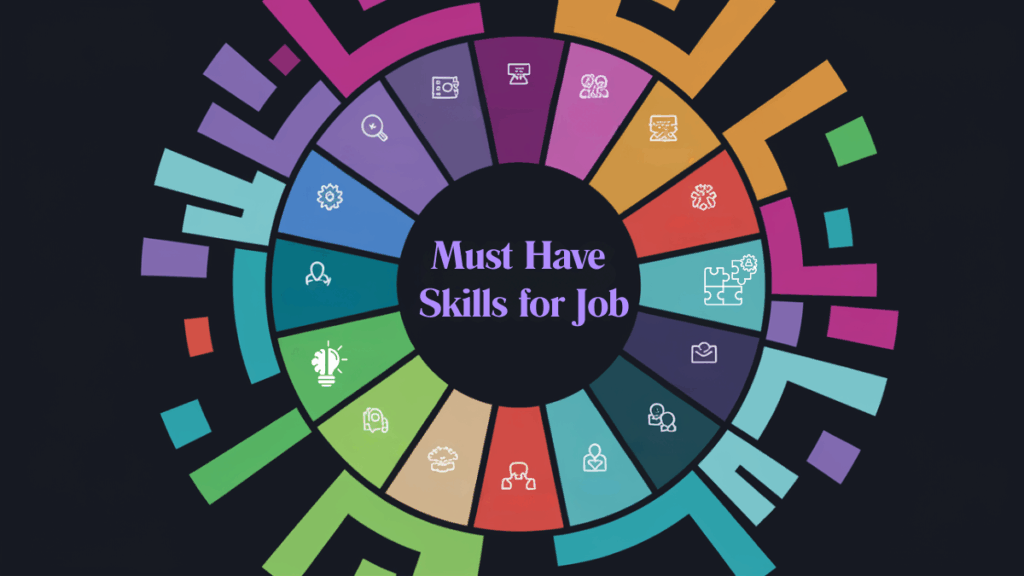Working a 10-hour shift can drain anyone, no matter how strong your focus is.
Staying on your feet, managing deadlines, or handling constant customer demands takes a toll when you barely get time to pause.
Many employees wonder what the law actually says about breaks and whether they’re missing out on the rest they legally deserve.
I’m here to clear that up. This article breaks down how many breaks in a 10-hour shift you’re entitled to, what labor laws require, and how those rules differ across states and countries.
You’ll learn what federal law says, the exact break rights in places like California, Washington, and Ontario, and how those compare internationally.
By the end, you’ll know exactly when and how long you can take a well-earned pause.
What are Breaks At Work?
Workplace breaks are regulated differently across countries, but the idea is universal: employees must have regular opportunities to rest, eat, and recharge during long shifts.
Under the Fair Labor Standards Act (FLSA), federal law in the United States doesn’t require employers to provide any breaks.
However, when employers choose to offer short breaks, they must comply with the FLSA’s pay rules.
| Short breaks of 5 to 20 minutes count as paid work time, while longer meal periods of 30 minutes or more can be unpaid only if you are fully relieved from duty. |
Many states go further by making breaks mandatory.
For example, California, Washington, and Oregon have strict rules requiring meal and rest periods. In Canada, Ireland, and Australia, laws ensure that workers are never on duty for more than five to six consecutive hours without a rest.
How Many Breaks in a 10 Hour Shift in The U.S.?

The number of breaks you’re entitled to in a 10-hour shift depends on where you work and your employer’s policies.
At the federal level, the law sets no requirement for employers to provide breaks, but most workplaces voluntarily follow common standards to remain competitive and fair.
| In general, a typical 10-hour shift in the U.S. includes two paid rest breaks of about 10 to 15 minutes each and one or two unpaid meal breaks lasting at least 30 minutes. |
States such as California require two 30-minute meal breaks for any shift exceeding ten hours, while others, like Georgia or Wisconsin, allow employers to set their own schedules.
This means your rights can vary significantly by state.
Federal law only guarantees that any short breaks offered must be paid, and any meal breaks must be unpaid only when you are completely relieved of duty.
If you are expected to continue working during a meal period, that time legally counts as work and must be paid.
How Many Breaks in a 10 Hour Shift in the U.S. States?
Now that I’ve clarified the types of breaks and their legal basis, it’s time to see what this actually looks like during a 10-hour workday.
The rules can vary widely from state to state, so let’s take a closer look at how different regions in the U.S. handle break requirements.
1. California Meal and Rest Break Law
California is known for strong worker protections.
Meal breaks: 30 minutes for shifts over 5 hours and a second 30 minutes for shifts over 10 hours.
Rest breaks: 10 paid minutes for every 4 hours worked or “major fraction” thereof.
Example for a 10-hour shift: A worker in California would get one rest break around the 2-hour mark, a 30-minute meal before the end of the 5th hour, another rest break near hour 8, and a second meal before the end of hour 10.
Missing any of these entitles the worker to one hour of extra pay for that day.
2. Washington State Break Requirements
In Washington, state law guarantees:
- A 30-minute meal break starting between the 2nd and 5th hour of work.
- A 10-minute paid rest break for every 4 hours worked.
- Employees cannot work more than 3 consecutive hours without a rest break.
So, for a 10-hour shift, you should receive one meal break and two rest breaks, both properly spaced to prevent fatigue.
3. Illinois Labor Law on Breaks
Illinois law provides:
- A 20-minute meal break for employees working 7.5 consecutive hours or more.
- The break must begin no later than the 5th hour of work.
- Employees who work longer than 10 hours must receive a second 20-minute meal break.
While the state doesn’t require rest breaks, employers who choose to offer them must treat short breaks (under 20 minutes) as paid time.
4. Wisconsin Break Policy
Wisconsin does not require adult employees to be given breaks.
However, minors under 18 must receive a 30-minute meal period for every 6 consecutive hours worked.
Many employers still provide voluntary rest breaks to reduce fatigue and maintain productivity.
5. Georgia Work Break Law
Georgia does not have state-specific rules on breaks. Employers can decide whether to offer rest or meal breaks.
If they do, any short breaks under 20 minutes must be paid, following federal law.
How Long Should the Break Be in a 10-Hour Shift?
The length of your breaks depends on both state law and company policy, but the pattern below is typical for most workplaces:
| Location | Rest Break | Meal Break | Regulation |
|---|---|---|---|
| Federal (U.S.) | 5–20 minutes, paid | 30+ minutes, unpaid if off duty | FLSA 29 CFR §785.18–785.19 |
| California | 10 minutes per 4 hours | 30 minutes per 5 hours | Labor Code §512 |
| Washington | 10 minutes per 4 hours | 30 minutes between hours 2–5 | WAC 296-126-092 |
| Illinois | Not required | 20 minutes by hour 5, second after 10 hours | 820 ILCS 140/3 |
| Wisconsin | None for adults | 30 minutes for minors | DWD 274.02 |
| Georgia | None required | None required | Federal compliance applies |
In summary, most employees working 10-hour shifts in states with defined labor laws receive at least two rest breaks and one or two meal periods, depending on their schedule.
10 Hour Shift Break Laws in Other Countries
While U.S. laws vary from state to state, many other countries have more consistent national regulations.
Look how 10 hour shift’s work break laws compare across Ontario, Canada, Ireland, and Australia, each offering its own take on protecting workers during long shifts.
1. Ontario, Canada
Under Ontario’s Employment Standards Act (ESA):
- Employees must receive a 30-minute eating period every 5 consecutive hours.
- The break may be split into two shorter periods if both sides agree in writing.
- It is generally unpaid unless the employee is required to remain on duty.
For a 10-hour shift, you’re entitled to two 30-minute breaks or one long break in each half of your shift.
2. Canada (Federal)
Under the Canada Labour Code, employees get:
- One 30-minute break every 5 consecutive hours of work.
- The break must be paid if the employee must stay available to the employer.
In a 10-hour workday, that means two 30-minute breaks, with pay required for any break where you remain on call.
3. Ireland
The Organisation of Working Time Act (1997) outlines:
- A 15-minute break after 4.5 hours of work.
- A 30-minute break after 6 hours.
- Daily rest periods of 11 consecutive hours and weekly rest of 24 hours.
A 10-hour shift in Ireland typically includes both a short and a longer break totaling at least 30 minutes.
4. Australia
Under the Fair Work system, specific entitlements depend on your award or enterprise agreement, but most include:
- A 10-minute paid rest break for every 4 hours worked.
- A 30–60-minute unpaid meal break after about 5 hours.
In a 10-hour day, this often means one main meal break and two shorter paid rests.
Typical Break Schedule for a 10-Hour Shift
An organized break schedule helps distribute rest periods evenly across a long day.
This rhythm prevents burnout and ensures legal compliance in states with strict labor laws.
Here’s a common pattern:
- Work from hour 0–2, then take a 10-minute rest.
- Continue until hour 5, then take a 30-minute meal break.
- After returning, work for an hour 8 and take another 10-minute rest.
- If your shift exceeds 10 hours (as in some roles), you may also qualify for a second 30-minute meal period before finishing.
How Breaks Affect Pay and Overtime?
Breaks directly influence how your working hours and overtime pay are calculated.
Paid rest breaks always count toward total hours worked.
Unpaid meal breaks do not count unless your employer expects you to perform tasks during that time.
If you’re required to answer calls, supervise, or stay on duty, that meal break becomes paid working time.
Overtime and Break Rules and Legality
Overtime pay is based on total hours worked over 40 in a week.
Since rest breaks are considered paid time, they count toward that total.
Keeping accurate records of your actual work time and break interruptions helps ensure you receive every dollar you earn.
For example, if you work 10-hour shifts for four days, your 40-hour total includes those short breaks.
If you work a fifth day, any additional hours, including paid rest breaks, push you into overtime territory.
Meal breaks, when unpaid and truly off duty, do not count toward overtime.
But if your employer interrupts or shortens your lunch frequently, those minutes may add up and qualify as paid time, potentially increasing your overtime hours.
What to Do if Your Break Rights Are Ignored?
If your employer regularly cuts into your breaks or refuses to provide them:
- Learn your state or national laws. Check your government’s labor department website.
- Keep written records. Note dates, times, and who was on duty when breaks were denied.
- Report issues to management. Address the problem professionally before escalating.
- Contact your labor board. You can file a formal complaint if violations continue.
- Consult a legal professional. If break violations affect your wages, seek advice on recovering lost pay.
Tips for Protecting Your Break Rights
- Take every break you’re entitled to.
- Set reminders or alarms if your workday is tightly scheduled.
- Review your workplace policies and confirm that they align with state or national law.
- Avoid signing any waiver you don’t fully understand regarding meal or rest periods.
- If you feel pressured to skip breaks, document the situation immediately.
Conclusion
Knowing how many breaks in a 10-hour shift you’re entitled to ensures fair treatment and prevents burnout.
In the U.S., federal law doesn’t mandate breaks, but states like California and Washington protect your right to rest and meal periods.
Canada, Ireland, and Australia also safeguard these pauses, requiring clear spacing between work periods.
By understanding your regional laws, tracking your schedule, and speaking up when breaks are denied, you maintain both your well-being and your legal rights.
Breaks aren’t optional; they’re essential to safety, productivity, and balance in every work environment.
Comment below your doubt, I’d be happy to solve it!









